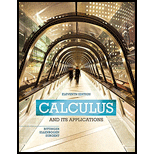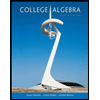
Concept explainers
Life and Physical Sciences
Radioactive Decay. Carbon-14 has a decay rate of 0.012097% per year. The rate of change of an amount N of carbon-14 is given by
where t is the number of years since decay began.
a. Let
represent the amount of carbon-14 present at
b. Suppose 200 g of carbon-14 is present at
c. After how many years will half of the 200 g of Carbon-14 remain?
Want to see the full answer?
Check out a sample textbook solution
Chapter 3 Solutions
Calculus and Its Applications Plus MyLab Math with Pearson eText -- Access Card Package (11th Edition) (Bittinger, Ellenbogen & Surgent, The Calculus and Its Applications Series)
Additional Math Textbook Solutions
Basic Business Statistics, Student Value Edition
Calculus: Early Transcendentals (2nd Edition)
Introductory Statistics
Elementary Statistics (13th Edition)
Elementary Statistics: Picturing the World (7th Edition)
- Consider an object moving along a line with the given velocity v. Assume t is time measured in seconds and velocities have units of a. Determine when the motion is in the positive direction and when it is in the negative direction. b. Find the displacement over the given interval. c. Find the distance traveled over the given interval. v(t) = 31² - 36t+105; [0,8] a. When is the motion in the positive direction? Select the correct choice and, if necessary, fill in the answer box to complete your choice. OA. The motion is in the positive direction for t-values in the interval(s) (Use a comma to separate answers as needed. Type your answers in interval notation.) OB. The motion is never in the positive direction. When is the motion in the negative direction? Select the correct choice and, if necessary, fill in the answer box to complete your choice. OA. The motion is in the negative direction for t-values in the interval(s) (Use a comma to separate answers as needed. Type your answers in…arrow_forwardEvaluate the following integral. √ In ² (x²), In √ Im ²(x²) dx = X dx ☐ dx = (Type an integer or a simplified fraction.)arrow_forwardA spring on a horizontal surface can be stretched and held 0.5 m from its equilibrium position with a force of 35 N. a. How much work is done in stretching the spring 1.5 m from its equilibrium position? b. How much work is done in compressing the spring 0.5 m from its equilibrium position? a. Set up the integral that gives the work done in stretching the spring 1.5 m from its equilibrium position. Use increasing limits of integration. 10 dx (Type exact answers. The amount of work done is (Simplify your answer.) b. Set up the integral that gives the work done in compressing the spring 0.5 m from its equilibrium position. Use decreasing limits of integration. dx (Type exact answers.) The amount of work done is (Simplify your answer.)arrow_forward
- Find the volume of the solid generated when the region bounded by y = 5x and y = 15√x is revolved about the x-axis. The volume of the solid is cubic units. (Type an exact answer.)arrow_forwardEvaluate the following integral using integration by parts. √xsi x sin 4x dx √x sin 4x dx = ☐arrow_forwardFind the arc length of the following curve on the given interval. 2 X y= Inx- on [4,20] 8 The arc length of y = Inx- 8 on [4,20] is ☐ (Type an exact answer.)arrow_forward
- 2 X Let = dx Complete parts (a) through (c) below. x-1 a. Evaluate I using the substitution u-x-1 X OXF (Use parentheses to clearly denote the argument of each function.) b. Evaluate after first performing long division on the integrand Simplify the integrand by dividing. Write it as a sum of terms where the numerators of all fractions have lower degree than the denominators. X-1 (Use integers or fractions for any numbers in the expression.) Evaluate the integral dx = (Use parentheses to clearly denote the argument of each function.) c. Reconcile the results in parts (a) and (b). Choose the correct answer below. OA. When the antiderivative in part (a) is expanded, the expression is the same as that obtained in part (b), except that the antiderivative in part (a) has a leading term of degree 3, while the antiderivative in part (b) has only terms of degree 2 or less. OB. The antiderivative obtained using one of the methods includes a term involving the natural logarithm function, while…arrow_forwardK 2 In the graph to the right, the equation of the parabola is x = (y-3)² 3 and the equation of the line is y = 9-x. Determine the area of the shaded region in the figure. The area of the shaded region is (Type an exact answer.) SAMSUNGarrow_forwardDetermine the area of the shaded region bounded by y = x²+6x and y = x²-2x The area of the region is (Type an exact answer.)arrow_forward
- Algebra & Trigonometry with Analytic GeometryAlgebraISBN:9781133382119Author:SwokowskiPublisher:Cengage

 College AlgebraAlgebraISBN:9781305115545Author:James Stewart, Lothar Redlin, Saleem WatsonPublisher:Cengage Learning
College AlgebraAlgebraISBN:9781305115545Author:James Stewart, Lothar Redlin, Saleem WatsonPublisher:Cengage Learning 
 Algebra and Trigonometry (MindTap Course List)AlgebraISBN:9781305071742Author:James Stewart, Lothar Redlin, Saleem WatsonPublisher:Cengage Learning
Algebra and Trigonometry (MindTap Course List)AlgebraISBN:9781305071742Author:James Stewart, Lothar Redlin, Saleem WatsonPublisher:Cengage Learning





